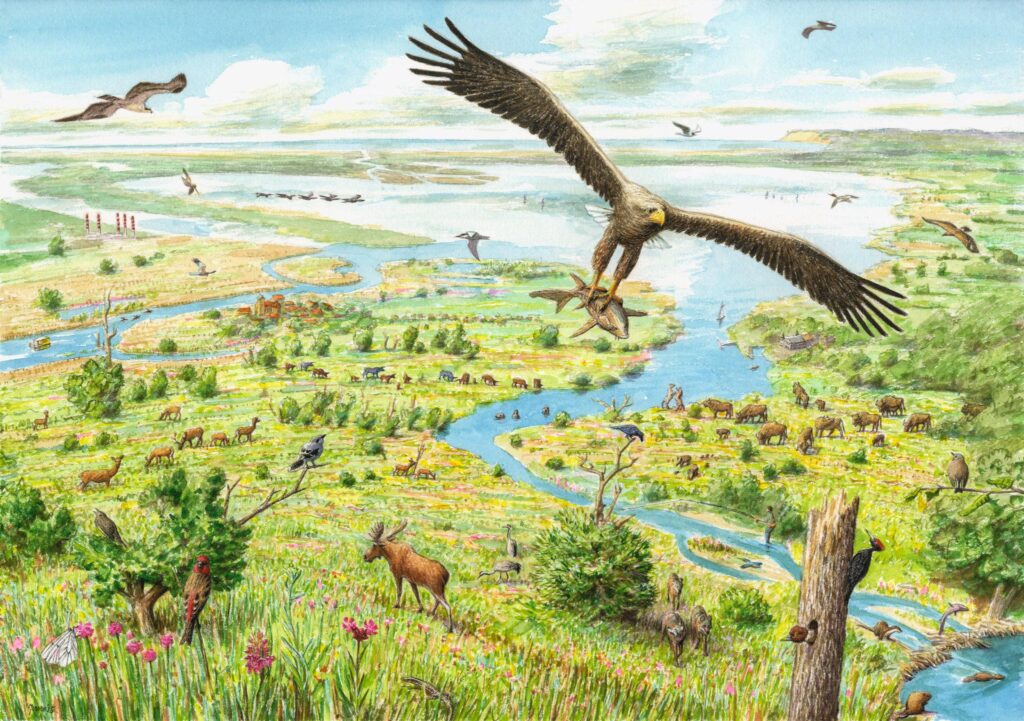China is embracing “rewilding” as a vital strategy in its ongoing conservation efforts, aiming to restore natural ecosystems and enhance biodiversity. Highlighted in a recent China Daily report, rewilding initiatives focus on allowing landscapes to recover through reduced human interference and the reintroduction of native species. This approach marks a significant shift in environmental policy, reflecting China’s commitment to sustainable development and ecological balance amid growing concerns over habitat loss and species decline.
Rewilding Emerges as Vital Strategy in China’s Conservation Agenda
China is increasingly embracing rewilding initiatives to bolster biodiversity and restore natural habitats, marking a significant pivot in its environmental policy. These projects focus on allowing ecosystems to regenerate naturally with minimal human interference, aiming to bring back native species and enhance ecological resilience. Key programs spread across provinces emphasize the revival of grasslands, forests, and wetlands, designed to support endangered wildlife and improve carbon sequestration. Efforts include reintroducing apex predators, such as the Amur leopard, and expanding protected areas to create larger, interconnected habitats.
The government’s multi-pronged approach can be summarized in the following ways:
- Habitat restoration: Large-scale reforestation and wetland rehabilitation projects.
- Species reintroduction: Breeding and releasing native species into the wild.
- Community involvement: Engaging locals through education and eco-tourism development.
- Policy support: Strengthened regulations and financial incentives for conservation.
| Project | Region | Focus | Status |
|---|---|---|---|
| Greater Khingan Forest Revival | Inner Mongolia | Forest regeneration & tiger corridor | Ongoing |
| Yangtze Wetlands Restoration | Hubei, Jiangxi | Wetland recovery & migratory birds | Completed 2023 |
| Qinghai Plateau Grassland Project | Qinghai | Grassland restoration & yak habitat | Ongoing |
Restoring Natural Habitats to Boost Biodiversity and Ecosystem Health
As the global community intensifies efforts to combat biodiversity loss, large-scale habitat restoration has emerged as a pivotal strategy. By allowing natural landscapes to recover and evolve with minimal human interference, ecosystems regain their complexity and resilience, which ultimately supports a wider array of species. Key initiatives focus on reintroducing native flora and fauna, controlling invasive species, and reestablishing natural processes such as water flow and fire regimes. Such measures have shown promising results in enhancing ecosystem functions, improving soil quality, and boosting wildlife populations.
Experts emphasize that restoring these habitats not only benefits wildlife but also strengthens ecosystem services critical to human well-being. These include:
- Carbon sequestration through regenerated forests and wetlands
- Water purification by revitalized wetlands and riparian zones
- Pollination support aided by diverse plant and insect communities
- Natural disaster mitigation such as flood control through intact floodplains
| Habitat Type | Restoration Focus | Key Outcome |
|---|---|---|
| Grasslands | Native grasses & controlled burns | Increased pollinators |
| Wetlands | Water flow restoration | Improved water quality |
| Forests | Tree planting & invasive species removal | Carbon capture rise |
Experts Advocate Policy Support and Community Engagement for Successful Rewilding Projects
Leading conservation experts highlight that the success of rewilding initiatives hinges on robust policy frameworks combined with active community involvement. They emphasize that without supportive legislation and clear guidelines, efforts to restore natural habitats and reintroduce native species often face regulatory hurdles and insufficient funding. At the same time, engaging local residents ensures that ecological projects align with community needs and gain grassroots momentum, ultimately fostering sustainable coexistence between humans and wildlife.
Key recommendations from specialists include:
- Implementing incentive-based policies to encourage private landowners’ participation.
- Facilitating educational programs to raise awareness about biodiversity benefits.
- Establishing multi-stakeholder platforms that promote dialogue among scientists, policymakers, and local people.
- Monitoring and adapting rewilding strategies through community feedback mechanisms.
| Policy Element | Community Role | Impact |
|---|---|---|
| Legal Protection for Wildlife | Local stewardship and reporting | Reduced poaching and habitat loss |
| Funding for Restoration Projects | Volunteer participation in habitat work | Enhanced ecosystem recovery |
| Incentives for Sustainable Land Use | Collaboration in monitoring biodiversity | Better resource management |
Wrapping Up
As China continues to expand its conservation initiatives, rewilding emerges as a promising strategy to restore ecosystems and protect biodiversity. By allowing nature to reclaim and regenerate, experts believe these efforts could play a vital role in addressing environmental challenges both locally and globally. With growing support from policymakers and communities alike, rewilding is set to become a cornerstone of China’s future conservation agenda.
